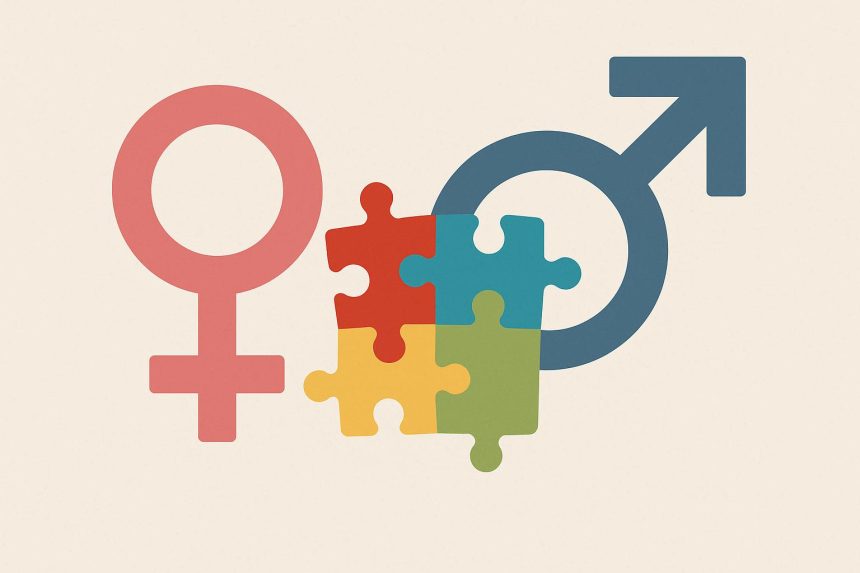The criteria used to identify autism was based on boys’ experiences, leading to a gender gap and decades-long lag in identifying girls’ experiences with autism.
Because girls and boys can have, and mask, different autistic presentations, this has led to a clear bias excluding girls who should have gotten a diagnosis. Today’s medical community is thankfully catching up, but many harmful misbeliefs still stand in the way.
Misbelief 1: Making Eye Contact Means They’re Not Autistic
This misbelief traces its roots to the male presentation of autism. However, girls and women learn early on about the importance of masking. They’re much more likely to mask themselves out of a diagnosis despite having issues with eye contact.
Typically speaking, girls learn at a young age that if they don’t make eye contact, they’re considered “weird.” Therefore, they often force themselves to make eye contact, even to the point of overdoing it.
Misbelief 2: They’re Unaware of Social Games
Some therapists mistakenly believe that if a girl is aware of social games, then she can’t be autistic. Nothing could be further from the truth, though.
Autistic girls tend to notice the social games that others play, although they’re often confused by them. Typically speaking, they’ll try to steer clear of these games and the girls who play them.
It is possible, however, that they’ll get sucked into a social group and attempt to play social games to fit in.
Misbelief 3: They Have No Interest in a Social Life
As the last misbelief makes clear, most autistic girls DO want to have a social life. The problem is that they can be less successful if they’re surrounded by neurotypical peers and held to those standards.
This is exacerbated by teachers convincing themselves that some girls are merely shy or are happier on their own. Instead of helping them learn how to build richer social lives, they’re usually left sitting on the sidelines.
Interestingly enough, autistic girls who struggle to communicate with their neurotypical peers often have an easier time communicating with other autistic girls. This doesn’t mean they will always get along or never disagree, but it does mean their perceived communication “deficiencies” aren’t present in all groups and therefore aren’t strictly deficiencies.
Misbelief 4: They’re Pushy and Opinionated
This misbelief comes from some people thinking that all autistic people are the same. Yes, there can be shared traits, but autism is a spectrum and each autistic person is unique.
Yes, some autistic girls and women are opinionated and strong-minded. However, there are others who are extremely sensitive and quite quiet. Plus, some of them can be opinionated yet quiet most of the time. Remember: It’s all a wonderfully diverse spectrum.
Misbelief 5: They’re Naturally Rude
In almost all cases, an autistic person is NOT trying to be rude. Instead, they simply have a different way of communicating, and neurotypical individuals can misinterpret that.
Where this misbelief becomes a huge problem is when an autistic person utilizes coping tactics like “fawning” as a trauma response. They’re seen as people-pleasers, which means they can’t possibly be autistic, right? Wrong!
Misbeliefs such as the ones above are a prime reason why so many girls go undiagnosed until later in life. Instead, it’s critical to ensure they’re properly diagnosed during childhood.
Companies like WPS offer certain assessment tools, such as the ADOS-2 Autism Diagnostic Observation Schedule Second Edition and the ADI-R Autism Diagnostic Interview that can help autistic children. Interview-based assessments like (MIGDAS™-2) Monteiro Interview Guidelines for Diagnosing the Autism Spectrum, Second Edition can be helpful for girls and adults seeking a diagnosis, and (ABAS®-3) Adaptive Behavior Assessment System, Third Edition can help round out a holistic assessment process.
Lynn Martelli is an editor at Readability. She received her MFA in Creative Writing from Antioch University and has worked as an editor for over 10 years. Lynn has edited a wide variety of books, including fiction, non-fiction, memoirs, and more. In her free time, Lynn enjoys reading, writing, and spending time with her family and friends.















